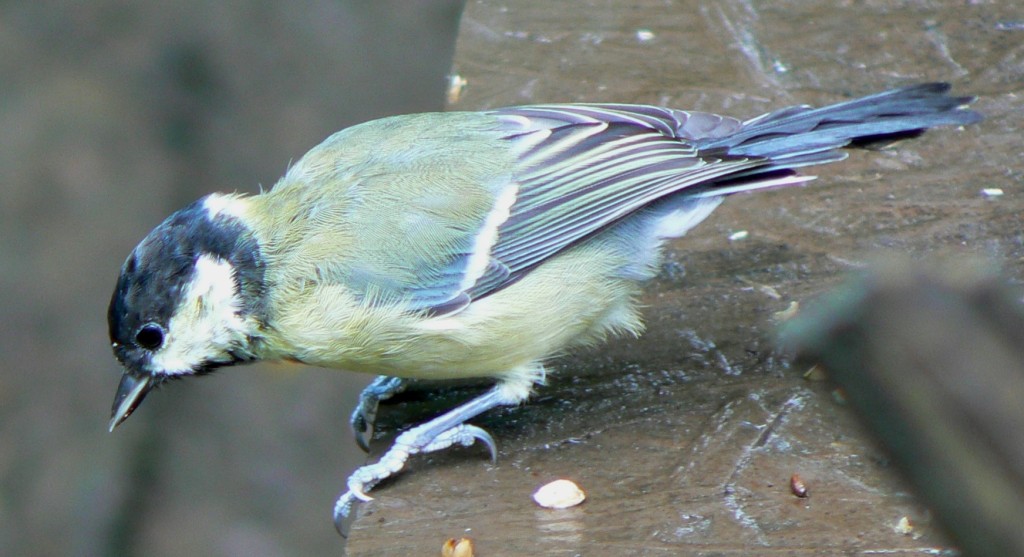
[250] Parus major, Great Tit
Introduction
Parus major, the Great Tit, is a common and widespread woodland bird, slightly larger than its relative [106] the Blue Tit. Like the Blue Tit it is seen in urban gardens and is attracted to bird feeders.
The word Tit is used in the names of most birds in the family Paridae and several other small birds.
Taxonomy
Kingdom – Animals
Phylum – Chordates
Class – Aves (Birds)
Order – Passeriformes
Family – Paridae (Tits)
Genus – Parus
Scientific Name – Parus major
Name
Parus is the Latin for this bird (and perhaps for other types of Tit.) Major means greater.
Description
The genus Parus used to include most of the fifty species now in the family Paridae but several recent changes have split almost all of them to other genera. It now contains just the Great Tit and three other geographically separate species. (One of them, the Japanese Tit is almost identical to the Great Tit and is sometimes considered to be a subspecies.)
The appearance of Parus major has much in common with that of the Blue Tit. It is slightly larger, with a flatter head and shorter bill. The head has triangular white cheeks but is otherwise all black (or very dark blue.)



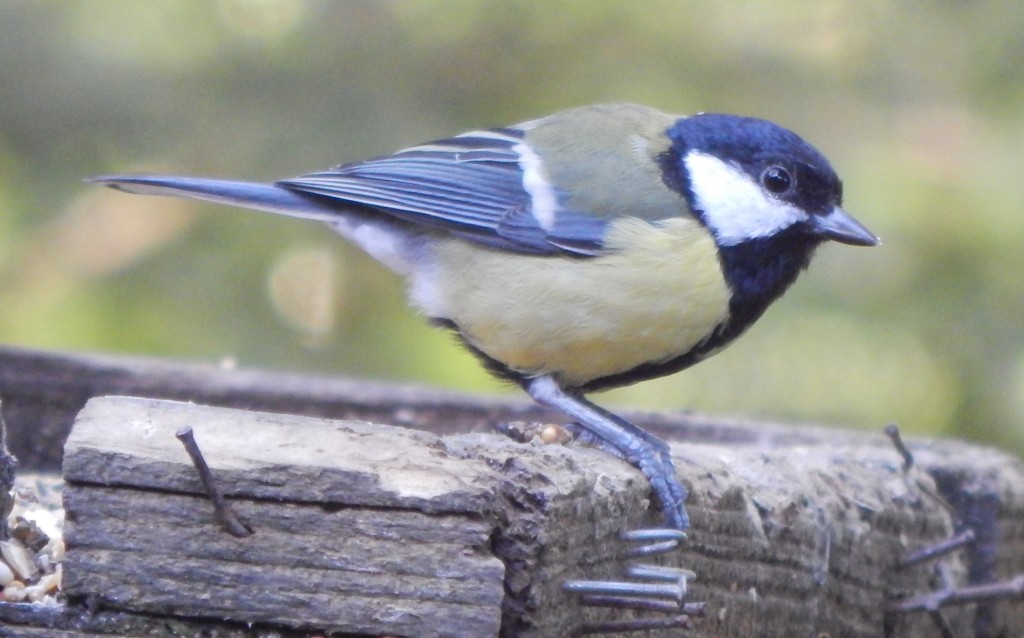
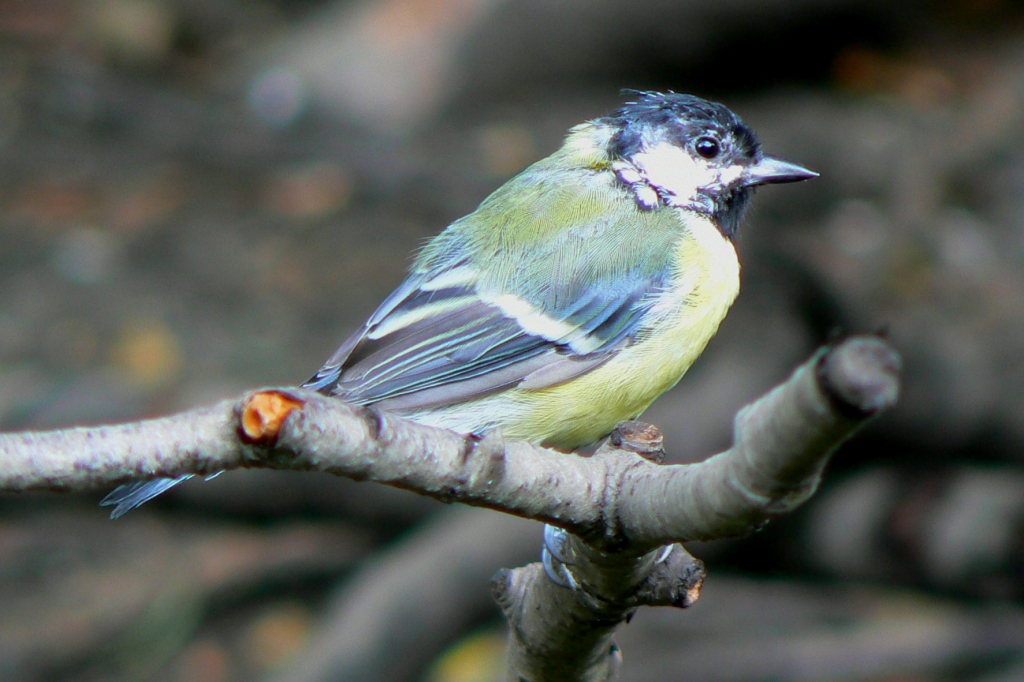
In males there is a marked dark stripe down the breast. This is less evident in females and juvenile birds.

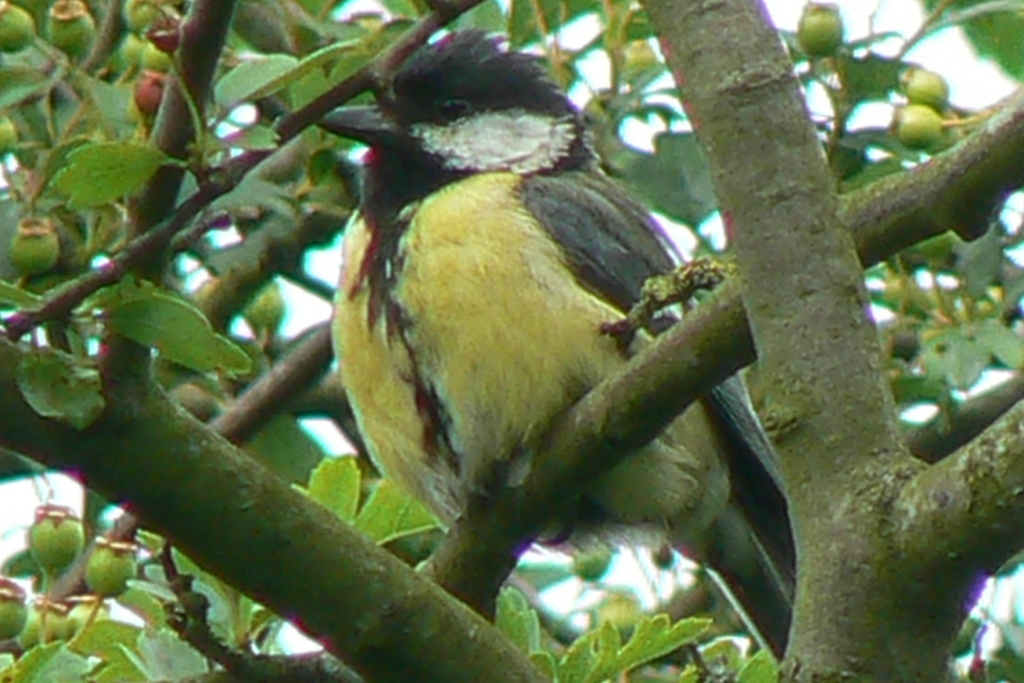
Habitat
Parus major is common and widespread across Europe and parts of Asia and northern Africa. They like woodland environments and do not migrate in winter. It is a bird that has adapted to live with human settlements and it lives in parks and gardens. It comes to bird feeders in woodlands and gardens.


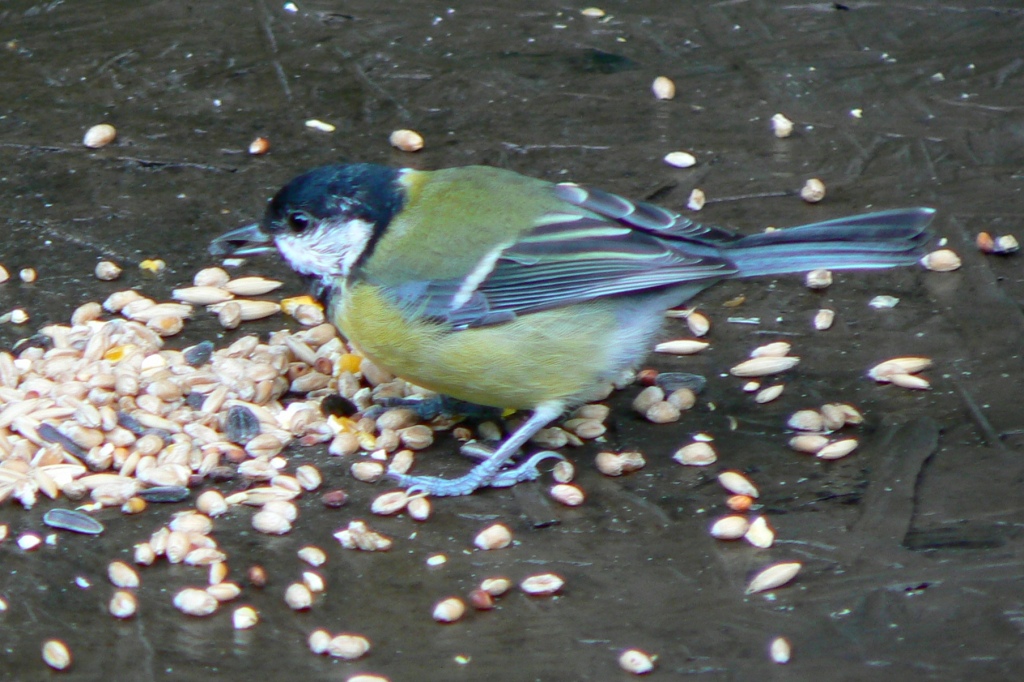


Other Notes
The Great Tit is notorious among birders, who generally prefer not to be call birdwatchers because they listen as well as look. It has at least forty varieties of call sounds that are not exciting enough to be called songs.
See also
There are several other similar small birds that may be found in Britain. The following species are called Tits.
- Cyanistes caeruleus, Blue Tit.
- Poecile palustris, the Marsh Tit, and Poecile montanus, the Willow Tit. Both are slightly smaller than Blue Tits, much rarer and only found in woodland. They are almost impossible to tell apart except by the sound of their calls.
- Lophophanes cristatus, the Crested Tit. Somewhat similar to the Blue Tit with a very definite crest. This bird is restricted to coniferous forests so its British range is restricted to parts of Scotland.
- Aegithalos caudatus, the Long-tailed Tit. Like a small tit with a long tail, this bird used to be in the genus Parus but has been split so that it doesn’t even make Paridae. It is fairly common and may be seen in parks and gardens, always as a flock of about twenty birds.
- Panurus biarmicus, the Bearded Tit, has never been a true tit and is now also called the Bearded Reedling or Bearded Parrotbill. It looks quite similar to a Long-tailed Tit and should more accurately be called moustached than bearded. They are not common and you are unlikely to see one more than a metre away from reeds in wetland environments.
- Remiz pendulinus, the Penduline Tit, also not in Paridae, looks quite similar to the Bearded Tit and is a very rare visitor to the UK.
For several other species of small birds see [005] Reed Warbler.
